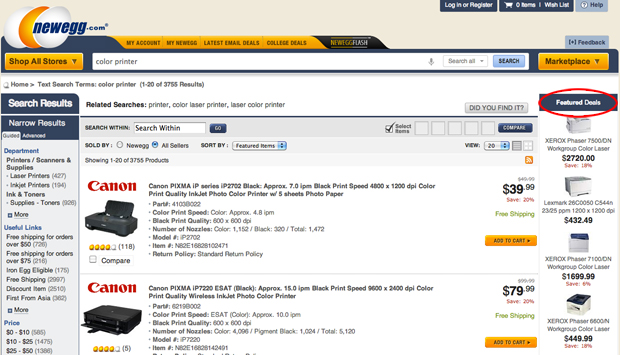For merchants who operate their own online stores, selling on eBay, Amazon, Rakuten, Sears, and other marketplaces can be confusing. Oftentimes, merchants must adopt a new way of thinking and even a different business model to be successful.
Here are seven tips on how to increase your visibility and revenue from third-party marketplaces. Some of these are basic concepts; some are new opportunities.
Optimize Your Content
Start with good product content, even if you sell a mass-market product. Optimize your headlines, create good short descriptions, include specifications, and offer alternate images. Make sure you provide accurate product UPCs and part numbers.
Optimize your data feed to ensure you include all required fields for each marketplace. Ensure your pricing and shipping settings are accurate.
Provide Superb Customer Service
Most marketplaces correspond with the customers directly. In that sense, they control the customer relationship, not you. Maintaining a top customer ranking is absolutely crucial to your success. Ensure that you set and meet the expectations for shipping. Honor the marketplaces’ refund and exchange policies with no questions asked. If you receive a customer inquiry, respond within hours, not days.
Amazon and eBay, for example, do not tolerate a lag in responding to a customer inquiry. Make sure to monitor your customer service emails throughout the weekend. If you receive an inquiry late on a Friday night and don’t respond until Monday morning, you are deemed late by Amazon and will be put on notice.
Boost Your Visibility Through Advertising
For Rakuten, Sears, TigerDirect, Newegg, and other lesser-known marketplaces, there is a new advertising network called Retail Search Exchange, by HookLogic. This new network allows you to promote specific products with an ad — similar to a Google Product Listing Ad — in the search results or in category pages. It is a pay-per-click model that links the ad to your listing within that marketplace. The network provides analytics to allow you to measure your return on ad spend.
Given the volume of product listings, this ad network seems to offer good opportunities to increase your product’s visibility and boost your revenue.
If your company is a product manufacturer, this ad network is also available within leading retailers like Target and Walmart.
In the example below, the “Featured Deals” on the right are from Retail Search Exchange.

The “Featured Deals” on the right side are actually ads from Hooklogic’s Retail Search Exchange.
Pricing
The prices within marketplaces have never been more dynamic. For nearly all mass-market items, you can count on prices changing throughout the day. Ensure that your price is either the lowest or close to the lowest to get in the “Buy Box” on Amazon. To accomplish that, consider using price-monitoring tools. There are many alternatives, including offerings from ChannelAdvisor, Monsoon Commerce, WisePricer, Appeagle, 360pi, Channel IQ, and others.
These solutions allow you to monitor the pricing of products on competitors’ sites, as well as within marketplaces. Many will also support dynamic re-pricing based on rules that you establish. To use dynamic pricing, however, make sure you understand your margins and have well-designed strategies for bid management. You can get into trouble with inventory or profits quickly if you do not execute re-pricing well.
Choose the Right Products
Make sure you are selling products that match the buyers in the marketplace. Ensure that your margins will support the prices and shipping expense of selling those products.
It may not be wise, for example, to list all of your products in a marketplace. Choose the ones that realistically will be competitive. Also recognize that products that sell well in your own store may not sell in the marketplace. Consider products specifically for a given marketplace. Conversely, you may want to promote products that are unique from the ones your sell on the marketplace. A tool like Retail Search Exchange, discussed above, could present your product alongside competitive offerings, to differentiate it.
Manage Availability
If you list products on multiple channels, ensure that you are managing your inventory accurately. This can be tricky. It usually requires an inventory management system. The last thing you want is to receive orders that exceed your inventory and have to cancel those orders from various marketplaces. Amazon, eBay, and others frown on that and will ding your customer rating as a result.
Create Promotion
Many marketplaces allow you to create a promotion. Consider offering holiday promotions on gift items. You can also offer free shipping or upgraded shipping. You may also consider offering gift wrapping for an added fee or for free if the marketplace allows it.




